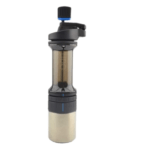Degassing Coffee: Is Fresh Best?
Hello, fellow coffee enthusiasts. In this post, we are going to talk about everything about degassing coffee. This might not be a subject many of you are familiar with but don’t worry, we have learned quite a bit as well! That’s what makes coffee great: there is always room to learn.
Today we are going to dive into what degassing is, what the pros and cons are, and a final consensus on whether it’s worth it long-term. We’ve got a lot to cover, so grab a comfy chair, something to sip on and let’s get started.

What is Degassing Coffee?
If you are like most of us, the biggest takeaway from this article will be to learn what degassing is in the first place? Aren’t there enough ways to make coffee already? We get it, but don’t worry. We have your answer, short and sweet.
Degassing coffee is when you let your freshly roasted coffee beans sit for a few days to allow the carbon dioxide to leave the beans.
Okay, so what exactly does that mean? When beans are roasted, gas forms inside. This is mostly carbon dioxide, with a few other types of gas sprinkled in. While this process is inevitable, the amount of time after degassing highly impacts the flavor of your coffee, and if you aren’t careful, brewing too early can cause an uneven extraction.
So it actually isn’t a way to make coffee as much as it is a time period of when you brew the coffee.
What are the Pros and Cons?
This question can be a little misleading. There’s no real pro or con of actually degassing coffee other than it will happen, but there are some major pros and cons on how long you wait and the flavor that comes with that waiting time.
Most of the gases are released within the first few days after brewing. However, each style of coffee bean varies in the amount of time it needs to be degassed. To make it simpler, we do have some broad rules that can apply to all of them.
- – Most of the gas leaves the bean within the first 24 hours.
- – Darker roasts degas faster than lighter roasts normally.
- – Longer roasts degas faster than shorter roasts normally.
-
Another big tip is to steer away from pre-grinding your beans to speed up the degassing process. This is a misconception many people fall for, thinking it will be faster, when actually the finer the grind of coffee, the longer the degassing process takes.
There is the option to brew fresh coffee ground, but it is very risky. In order to do so, you would need to bloom your coffee which means wetting the beans and letting them sit for about 30 seconds. This rapidly releases the beans’ carbon dioxide in hope of the effect of degassing that the slow process would give. However, keep in mind that even with this, you might end up with an uneven brew, so letting coffee degas is always the safer option. If you are in a bind or simply impatient and plan on blooming your beans, wait at least a few hours or a day if possible.
These are just some broad rules to live by, but they definitely do not answer everything. Learning about your favorite types of roasts and the specific needs for that type of bean will always give you the best results.
What is Best?
So, what is the best way to degas coffee? This is a loaded question because it depends on the type of coffee, as we have already mentioned, but what we can answer is the question of fresh always being best. With confidence, we can tell you that is not always the case.
Something to also keep in mind is that if you are not roasting your own coffee beans, most sellers do not sell coffee grounds until their beans are fully degassed according to their style, so most people won’t have to worry about this!
But, if you are a fan of roasting your own beans, be sure to check what type of beans you are roasting and compare that to our simple rules as well as the many guides out there that can get as specific as you could possibly want!
Regardless of the varying times of degassing, the best option is to pinpoint when the coffee degassing process ends for your specific style of coffee bean and brew your coffee before the oxidation process begins. Just like carbon dioxide in the beans makes for a less flavorful coffee cup, so does extra oxygen.
Conclusion
Whew, that was a lot of information. Thanks for bearing with us, and we hope you have learned everything you need to from this article. Now you are more than ready to get out there and make the perfect cup of joe with your coffee beans. Happy brewing!





